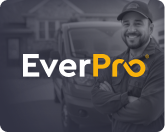Retirement Planning for Self-Employed Contractors
In this article, we’ll look at one of the most important factors to consider when you’re self-employed—retirement options—including the best self-employed retirement plans and how they work.

Guest Contributor
We are living in a gig economy. Many people are working side jobs or running their own businesses.
In fact, 28% of the U.S. population is self-employed. Self-employment can range from owning and operating your own company to offering freelance services, contracting, or even working for Uber Eats.
In this article, we’ll look at one of the most important factors to consider when you’re self-employed—retirement options. We’ll review some of the best retirement options for self-employment and how each of these options works.
Please note that this article does not provide financial or tax advice and is only an overview of what retirement options are out there.
What Should You Consider When Evaluating Retirement Options?

As an entrepreneur, there are many factors to consider when choosing a retirement savings plan.
For example, some plans are built specifically for small businesses with employees. Others are geared toward individual sole proprietorships.
When choosing a self-employed retirement plan for your business, here are the top components to take into account:
Contribution Limits for Retirement Savings
Think about the stability and consistency of your income.
Can your business produce consistent revenue? Can the revenue you make meet the contribution requirements of the plan that you’re interested in? Or do you need the flexibility to add different amounts rather than a fixed rate?
Taxed vs. Tax-Free Retirement Accounts
Each retirement plan offers different tax breaks. Would you prefer to save on your taxes through payroll? Do you want to put away less now but not have to deal with taxes later?
Retirement account tax implications are important considerations. Each option processes tax breaks differently.
Your Business Type
Are you a business owner with multiple employees and a large payroll? Or are you a freelancer who operates a sole proprietorship?
It’s smart to consider which retirement plan option is best for your business structure. Some are a better fit for a larger company, while others are more appropriate for the solo worker.
What Are the Best Self-Employed Retirement Plan Options?
1. IRA (Traditional or Roth)
An IRA (Individual Retirement Account) is the most common and basic retirement plan option available. A traditional IRA is funded with pre-tax money, while a Roth IRA is funded with after-tax money. But there are other differences to consider too.
Neither IRA types require you to be traditionally employed or self-employed. The only requirement is that you have earned income.
What is the IRA contribution limit?
The traditional and Roth IRA contribution limit is currently $6,000 a year. However, it’s set to increase to $6,500 in 2023.
If you’re over the age of 50, you can contribute an additional $1,000 per year to your IRA.
How is an IRA taxed?
A traditional IRA is contributed before taxes, so the money will be taxed once accessed.
A Roth IRA won’t have an immediate tax break but will be tax-free income once accessed. Self-employed individuals tend to prefer the Roth IRA for this reason.
What type of business would an IRA work best for?
IRA retirement plans work great for any type of business.
Whether you’re self-employed full-time or work a side gig, these plans have many advantages. One significant advantage is that the traditional and Roth IRAs allow for both you and your employer to contribute to these funds.
2. Solo 401k

A solo 401k is set up specifically for individuals who are self-employed. It operates essentially the same as a regular workplace retirement plan.
Even if you have a full-time job, you can still use a solo 401k if you have some form of self-employed income. The only other requirement is that you can’t have any full-time employees unless they’re your spouse.
What is the solo 401k contribution limit?
A solo 401k retirement plan has a higher contribution limit than most other options. You can contribute up to $61,000 a year if you’re under 50.
If you’re 50 or older, you can contribute up to $67,500 per year to a solo 401k.
How is a solo 401K taxed?
A solo 401k will reduce your taxable income, as you invest pre-tax earnings into the account. Withdrawals, upon retirement, will be taxed as regular income.
What type of business would a solo 401k work best for?
A solo 401k is a great option for anyone with any self-employed income.
This plan could be a smart choice for freelancers, contractors, sole proprietorships, and anyone who works a side gig.
3. SEP-IRA

A SEP-IRA (Simplified Employee Pension IRA) is just that—simple. This retirement plan is flexible and easy to navigate. It can be set up for large-scale businesses or sole proprietorships.
Contributions to a SEP retirement plan can be made by self-employed individuals and by employers. If you’re an employer, you must contribute equally to each individual employee.
What is the SEP contribution limit?
The SEP-IRA has higher contribution limits than the Roth IRA. The maximum amount you can contribute is 25% of your income or, as of 2023, $66,000 per year.
How is a SEP taxed?
SEP-IRAs are taxed just like traditional IRAs, which are taxed on withdrawals as they’re made.
What type of business would a SEP-IRA work best for?
This type of retirement plan is a good option for any self-run business anywhere from 1-100 employees.
You can adjust your contributions based on cash flow, which makes this option especially flexible.
4. SIMPLE IRA
A Savings Incentive Match Plan for Employees (SIMPLE IRA) is generally used for small businesses. Typically, these businesses have fewer than 100 employees.
This type of IRA allows both employee and employer to contribute to the employee’s retirement fund. It also has lower startup costs than traditional employee retirement funds.
Employees may elect to contribute to their SIMPLE IRA, while employers are required to contribute 3% of total annual compensation. These accounts are always owned entirely by the employee.
What is the SIMPLE IRA contribution limit?
In 2023, the limit for a contribution to a SIMPLE IRA will be $15,500 or 100% of your self-employed income, whichever is less. You can always contribute less or nothing at all.
How is a SIMPLE IRA taxed?
SIMPLE IRA funds are subject to taxes upon withdrawal. According to the IRS, if you make a withdrawal before the age of 59 ½, the taxes will be increased by 10%.
What type of business would a SIMPLE IRA work best for?
This retirement plan is best suited for employers with a handful of employees.
A solo 401k or SEP might be better for a sole proprietorship, freelancers, and other single-person businesses.
5. Defined Benefit Plan (Pension)
A defined benefit plan is also known as a pension. This is what most people typically think of when they think about retirement plans.
Although they used to be the go-to retirement option for American businesses, pensions are becoming a less popular option. A defined benefit plan works by putting a percentage of your compensation, compounded with years of service, into a retirement fund.
A pension is set up to pay you a specific dollar amount every month, starting when you retire. Pensions were good incentives for workers to stay with a company for a long period of time.
Defined benefit plans are becoming less common compared to 401k options, as they don’t provide as much flexibility for self-employed individuals.
RELATED ARTICLE: How Contractors Can Reduce Employee Turnover
What is the defined benefit plan contribution limit?
Contributions to a pension are mandatory, which may or may not be a dealbreaker for you.
These retirement plans allow you to contribute up to $265,000 per year as of 2023. This contribution rate is one of the things that tends to draw people to this option.
How is a defined benefit plan taxed?
A defined benefit plan is not taxed once the funds are in your account. This retirement plan can also be used in combination with a 401k, which provides room for more tax breaks.
Additionally, a pension reduces income taxes and payroll taxes.
What type of business would a defined benefit plan work best for?
A pension would be best to use in conjunction with 401k or if you own a business. It’s a great way to get tax breaks if you have employees and payroll.
What’s the Next Step in Planning Your Retirement?

The best self-employed retirement plan for your business will depend on many different factors, as we discussed above. This article isn’t meant to tell you what your best retirement option is but rather to help you make sense of the options available to you.
We recommend seeking professional advice when deciding on a retirement plan, as your options can vary between states. A certified financial advisor can help you choose the right plan.
In the meantime, here are a few things you can do to help you determine the best self-employed retirement plan for your business right now:
- Continue your research. This article is a great start to your retirement planning research. From here, we recommend checking out more in-depth comparisons of the pros and cons of each option listed. Here’s a helpful article to start with.
- Contact a financial advisor. A financial advisor can be an invaluable resource in navigating retirement planning when you’re self-employed. Open up a new tab right now and look up “financial advisors near me” to get started finding one.
- Talk to your team. Your employees deserve to have a say in their retirement planning. Ask them which option sounds like the best one to them. Make the process quick and easy by creating a survey to send out using a free survey site like SurveyMonkey.
Selah is a freelance journalist. Her professional passions include psychology, sociology, and regenerative education. When she's not writing, you can find Selah traveling the world, cooking without a recipe, or catching an early morning surf.

Business Solutions For Field Service Pros
EverPro offers specialized solutions designed for home and field service professionals. We’ve got the business tools to help you get the job done.



